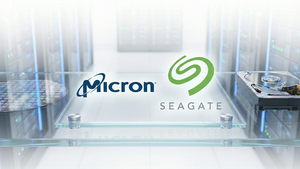
In the intricate and increasingly vital world of semiconductor manufacturing, two giants, ASML Holding N.V. (AMS: ASML) and Texas Instruments Incorporated (NASDAQ: TXN), stand as pillars, each wielding distinct yet equally indispensable influence. While ASML provides the cutting-edge machinery that enables the creation of the world's most advanced microchips, Texas Instruments supplies the foundational analog and embedded processing components that bring these electronic systems to life across myriad applications. This comparative analysis delves into their unique technological contributions, market impact, and strategic importance, illuminating how these seemingly disparate entities are both crucial for the relentless march of technological progress, particularly in the burgeoning era of artificial intelligence.
ASML, a Dutch multinational, holds a near-monopolistic grip on the most advanced photolithography equipment, the sophisticated tools that print the microscopic patterns onto silicon wafers. Its Extreme Ultraviolet (EUV) lithography machines are the linchpin for producing chips at the 5nm node and beyond, making it an irreplaceable enabler for leading-edge foundries like TSMC, Samsung, and Intel. Conversely, Texas Instruments, an American multinational, dominates the market for analog chips and embedded processors, which constitute the "brains" and "senses" of countless electronic devices. From automotive systems to industrial automation and personal electronics, TI's components manage power, convert real-world signals, and provide essential control, forming the bedrock upon which complex digital systems are built.
The Microscopic Art of Lithography vs. The World of Analog Intelligence
ASML's technological prowess is centered on photolithography, a process akin to projecting extremely intricate blueprints onto silicon. At the forefront of this is its Extreme Ultraviolet (EUV) lithography, a marvel of engineering that employs 13.5 nm wavelength light generated by firing a high-energy laser at molten tin droplets. This ultra-short wavelength allows for the printing of features as small as 13 nanometers, enabling the production of chips with transistor densities required for 5nm, 3nm, and even future 2nm process nodes. This differs fundamentally from previous Deep Ultraviolet (DUV) systems, which use longer wavelengths and require complex multi-patterning techniques for smaller features, making EUV a critical leap for cost-effective and high-volume manufacturing of advanced chips. ASML is already pushing the boundaries with its next-generation High Numerical Aperture (High-NA) EUV systems (EXE platforms), designed to further improve resolution and enable sub-2nm nodes, directly addressing the escalating demands of AI accelerators and high-performance computing. The industry's reaction has been one of awe and dependence; without ASML's continuous innovation, Moore's Law would have significantly slowed, impacting the very foundation of modern computing.
Texas Instruments, on the other hand, operates in the equally vital, albeit less visible, realm of analog and embedded processing. Its analog chips are the unsung heroes that interface the digital world with the physical. They manage power, convert analog signals (like temperature, sound, or pressure) into digital data, and vice-versa, ensuring stable and efficient operation of electronic systems. Unlike general-purpose digital processors, TI's analog integrated circuits are designed for specific tasks, optimizing performance, power consumption, and reliability for real-world conditions. Its embedded processors, including microcontrollers (MCUs) and digital signal processors (DSPs), provide the dedicated computing power for control and signal processing within a vast array of devices, from automotive safety systems to smart home appliances. This differs from the high-speed, general-purpose processing seen in CPUs or GPUs, focusing instead on efficiency, real-time control, and specialized functions. Industry experts recognize TI's extensive portfolio and manufacturing capabilities as crucial for ensuring the widespread adoption and reliable functioning of intelligent systems across diverse sectors, providing the essential "glue" that makes advanced digital components functional in practical applications.
Strategic Imperatives and Ecosystem Impact
The distinct roles of ASML and Texas Instruments create unique competitive implications within the semiconductor ecosystem. ASML's near-monopoly in EUV lithography grants it immense strategic importance; it is a critical gatekeeper for advanced chip manufacturing. Companies like Taiwan Semiconductor Manufacturing Company (NYSE: TSM), Samsung (KRX: 005930), and Intel (NASDAQ: INTC) are heavily reliant on ASML's machines to produce their leading-edge processors, memory, and specialized AI chips. This dependence means ASML's technological roadmaps and production capacity directly influence the competitive landscape of the entire semiconductor industry. Any disruption to ASML's supply or innovation could have cascading effects, impacting the ability of tech giants to deliver next-generation products. ASML's continuous advancements, like High-NA EUV, ensure that these chipmakers can continue shrinking transistors, which is paramount for the performance gains required by demanding AI workloads.
Texas Instruments' broad portfolio of analog and embedded processing solutions positions it as a foundational supplier across an incredibly diverse customer base, exceeding 100,000 companies. Its strategic focus on industrial and automotive markets (which account for approximately 75% of its revenue) means it stands to benefit significantly from the ongoing electrification of vehicles, the rise of industrial automation, and the proliferation of IoT devices. While TI faces competition from companies like Analog Devices (NASDAQ: ADI) and NXP Semiconductors (NASDAQ: NXPI), its extensive product catalog, robust manufacturing capabilities (with a significant portion of its production in-house), and long-standing customer relationships provide a strong competitive edge. TI's components are crucial for enabling the energy efficiency, sensing capabilities, and real-time control necessary for AI at the edge and in embedded systems. Its strategic importance lies in providing the reliable, high-performance building blocks that allow innovative applications, even those leveraging ASML-enabled advanced digital chips, to function effectively in the real world.
Broader Significance in the AI Landscape
Both ASML and Texas Instruments are fundamentally shaping the broader AI landscape, albeit from different vantage points. ASML's lithography technology is the primary driver behind the miniaturization and increased computational power of the processors that underpin sophisticated AI models. Without the ability to pack billions of transistors into a tiny space, the complex neural networks and massive datasets that characterize modern AI would be computationally unfeasible. ASML's advancements directly enable the creation of more powerful GPUs, TPUs, and specialized AI accelerators, allowing for faster training, more efficient inference, and the development of increasingly complex AI algorithms. Its role is to continuously push the physical boundaries of what's possible, ensuring that the hardware foundation for AI continues to evolve at a rapid pace.
Texas Instruments' significance lies in enabling the widespread deployment and practical application of AI, particularly at the edge. While ASML provides the means to build the "brains" of AI, TI provides the "nervous system" and "senses." Its analog chips are essential for accurately collecting real-world data (e.g., from sensors in autonomous vehicles or industrial robots) and converting it into a format that AI processors can understand. Its embedded processors then provide the localized intelligence and control, enabling AI models to run efficiently on devices with limited power and computational resources. This is crucial for applications like predictive maintenance in factories, advanced driver-assistance systems (ADAS) in cars, and energy management in smart grids. Potential concerns, particularly for ASML, revolve around geopolitical tensions and export controls, as its technology is deemed strategically vital. For TI, the challenge lies in maintaining its market leadership amidst increasing competition and the need to continuously innovate its vast product portfolio to meet evolving industry demands.
Future Horizons: The Path Ahead
Looking ahead, both ASML and Texas Instruments are poised for significant developments, each addressing the evolving needs of the technology sector. For ASML, the near-term focus will be on the successful ramp-up and adoption of its High-NA EUV systems. These machines are expected to unlock the next generation of chip manufacturing, enabling 2nm and even sub-2nm process nodes, which are critical for future AI advancements, quantum computing, and high-performance computing. Experts predict that High-NA EUV will become as indispensable as current EUV technology, further solidifying ASML's strategic position. Challenges include the immense cost and complexity of these systems, requiring significant R&D investment and close collaboration with leading chipmakers. Long-term, ASML will likely explore even more advanced patterning technologies, potentially moving beyond light-based lithography as physical limits are approached.
Texas Instruments' future developments will likely center on expanding its industrial and automotive portfolios, with a strong emphasis on power management, advanced sensing, and robust embedded processing for AI at the edge. Expected applications include more sophisticated radar and vision systems for autonomous vehicles, highly integrated power solutions for electric vehicles and renewable energy, and low-power, high-performance microcontrollers for industrial IoT and robotics. Challenges for TI include managing its extensive product lifecycle, ensuring supply chain resilience, and adapting its manufacturing capabilities to meet increasing demand. Experts predict a continued focus on vertical integration and manufacturing efficiency to maintain cost leadership and supply stability, especially given the global emphasis on semiconductor self-sufficiency. Both companies will play pivotal roles in enabling the next wave of innovation, from truly autonomous systems to more intelligent and energy-efficient infrastructure.
A Symbiotic Future: Powering the Digital Age
In summary, ASML Holding and Texas Instruments represent two distinct yet symbiotically linked forces driving the semiconductor industry forward. ASML, with its unparalleled lithography technology, is the master enabler, providing the foundational tools for the creation of increasingly powerful and miniaturized digital processors that fuel the AI revolution. Its EUV and future High-NA EUV systems are the gatekeepers to advanced nodes, directly impacting the computational horsepower available for complex AI models. Texas Instruments, through its expansive portfolio of analog and embedded processing, provides the essential interface and intelligence that allows these advanced digital chips to interact with the real world, manage power efficiently, and enable AI to be deployed across a vast array of practical applications, from smart factories to electric cars.
The significance of their combined contributions to AI history cannot be overstated. ASML ensures that the "brains" of AI can continue to grow in power and efficiency, while TI ensures that AI can have "senses" and effectively control its environment. Their ongoing innovations are not just incremental improvements but foundational advancements that dictate the pace and scope of technological progress. In the coming weeks and months, industry watchers should keenly observe ASML's progress in deploying High-NA EUV systems and Texas Instruments' continued expansion into high-growth industrial and automotive segments. The interplay between these two titans will continue to define the capabilities and reach of the digital age, particularly as AI becomes ever more pervasive.
This content is intended for informational purposes only and represents analysis of current AI developments.
TokenRing AI delivers enterprise-grade solutions for multi-agent AI workflow orchestration, AI-powered development tools, and seamless remote collaboration platforms.
For more information, visit https://www.tokenring.ai/.





